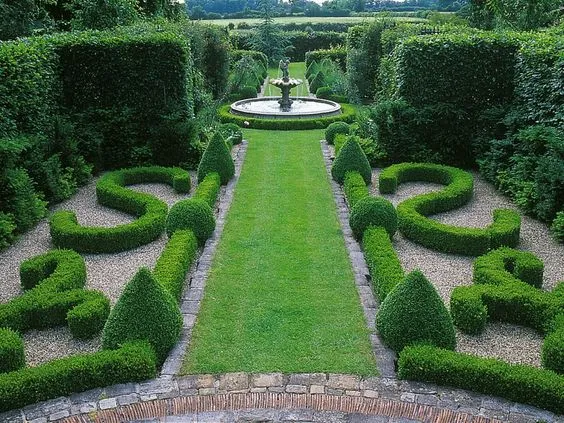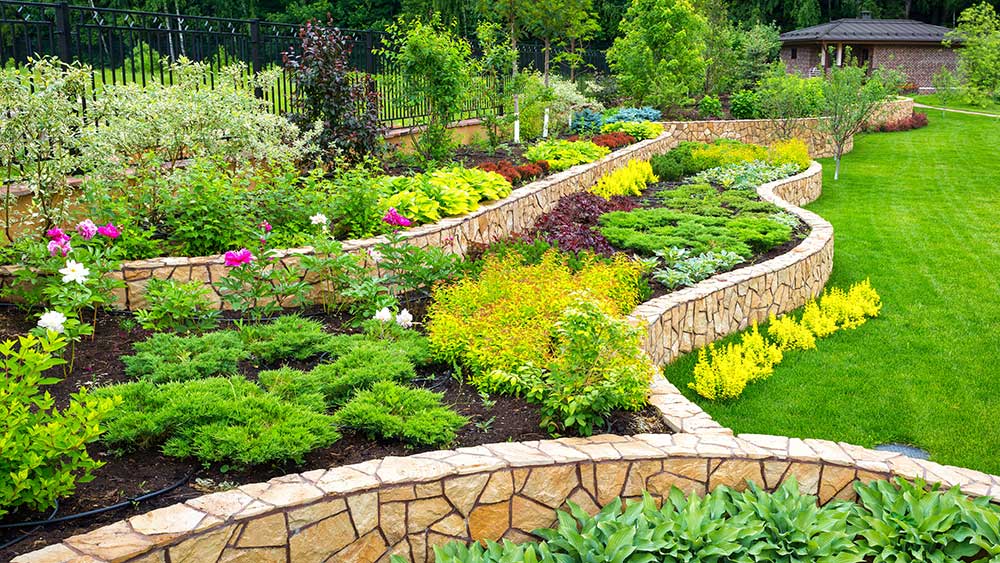Some Ideas on Landscapers You Need To Know
Not known Facts About Landscapers
Table of ContentsLandscapers Fundamentals ExplainedTop Guidelines Of LandscapersAll About LandscapersExamine This Report on LandscapersGetting The Landscapers To WorkIndicators on Landscapers You Need To Know
- A yard feature where water is represented by an aggregate stone product, generally a gravel or granite. These are most typically located in modern-day and Japanese yard layout.- A stone or flagstone patio area, course, or walkway developed without a concrete base. The base would be compacted gravel and the joints would be an accumulation or walkable ground cover. - A stone maintaining or cost-free standing wall surface constructed without using mortar. A highly skilled mason is required for a dry stack stone wall. A lot of wall surfaces in Portland are not dry stacked, even if they seem. - An underground structure that collect water and permits it to reduce percolate right into the dirt around it.
Landscape design that works with a sites' environment in both appearance and sustainability without adverse influences to the setting. Bordering in the landscape is a line of demarcation that develops aesthetic rate of interest in the garden by dividing one sector from one more section. This can be aesthetic or functional, maintaining one aspect (such as pea gravel) from obtaining combined right into an additional (like bark dirt).
Locations can additionally have a sensation of "enclosure" given by trees, other growings, fencings, or screens. The landscape near the entry to a structure. A tree, shrub or creeping plant, educated to grow on a wall surface or fence into a details pattern. Specifically valuable for fruit trees, making it very easy to gather the fruit and including mess.
Not known Facts About Landscapers

The element in a landscape design or area in a landscape that is implied to be most famous. The prime focus can be a plant, boulder, statuary, gathering space, or various other landscape function. A design of yards or garden aspects that worry straight lines, ideal angles and circles. Shrubs or bushes found in beds near the foundation of a home or other structure.

Landscapers Things To Know Before You Get This
Rock item, either rounded or fractured, that is relatively little- usually 1" or less. Low plants that are allowed or encouraged to top an area. Can refer to any "hard" yard elements consisting of statuary or rocks but most generally is used to refer to courses, patio areas, and walls.: Height difference between the level of water in a pond (or the level of the pump if it rests outside the fish pond) and the upper outlet of water which affects efficiency of the water pump in gph (gallons per hour). Thick shrubs or trees that develop a fencing, screen, or special info boundary.
Fencing boards that run flat, commonly made use of in contemporary or Japanese-inspired landscape layouts. Appropriate use of imaginary lines can assist the landscape feel linked to the home and other elements.
Standard PNW landscapes are casual. A plant that spreads out even more than preferred, or right into habitats where it does damage.
The Best Guide To Landscapers
Can consist of head positionings and insurance coverage, pipe sizing, GPM specs, find out this here and products required to mount this system. Licensed specialist who develops landscapes, educated in design and style as well as in horticulture.
Landscape developers typically have much less schooling than Landscape Architects and are not certified. A completed landscape style, outlining all aspects for the brand-new landscape.
Making use of numerous plantings of the very same range to fill in a location in the landscape. This can decrease upkeep and water use in the yard.
A layer of garden compost or bark dust used at the base of a plant. A plant that was present in a geographical place prior to people began changing the landscape.
More About Landscapers
Exactly how the garden or a yard aspect is set up in relationship to an existing or new function or to a direction. Lawns that are not mowed yet expanded in landscapes as perennials.

Plants that offer seasonal interest and after that die back in the winter. Cold period lawn that is the most typical lawn lawn in Portland, OR and the remainder of the PNW.An open roofed structure over a patio or various other landscape function.
The most typical landscape crushed rock in the PNW. Location of the landscape made to take care of rain water till it can soak right into the ground.
Framework made from timber, concrete, paving stones, blocks or other products for click for more info stabilizing slopes and protecting against extreme disintegration. Narrow gutter. Creating a garden function being composed mainly of rocks with plantings that match and can grow in the rocky atmosphere. Lawn sprinkler head style that rotates a stream of water across a location.
The Basic Principles Of Landscapers
